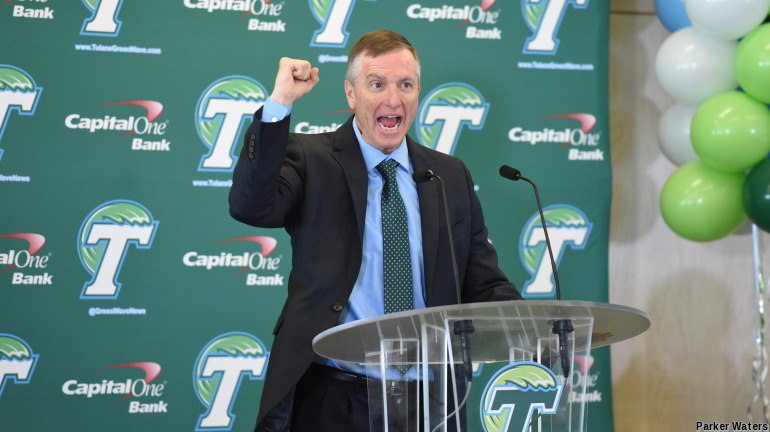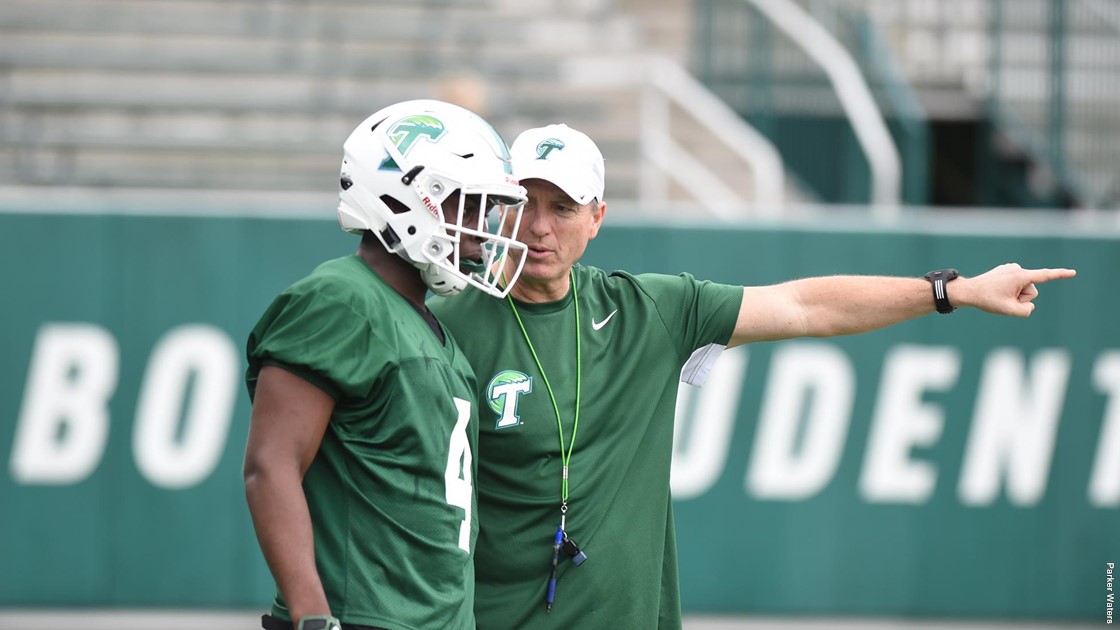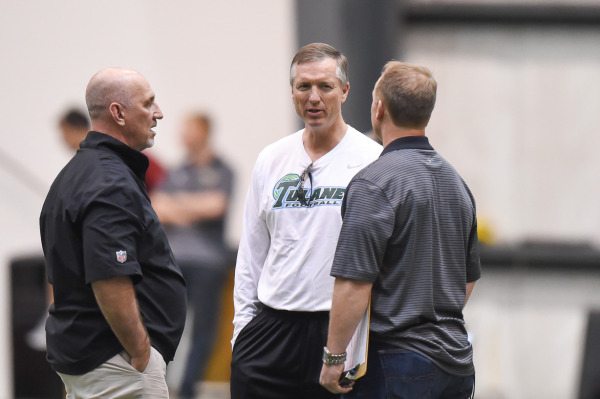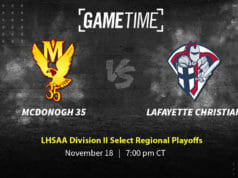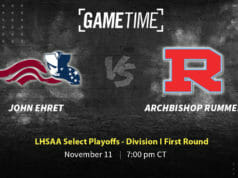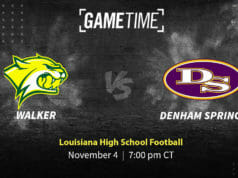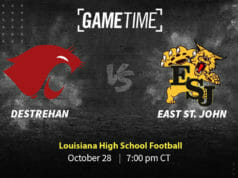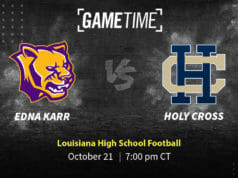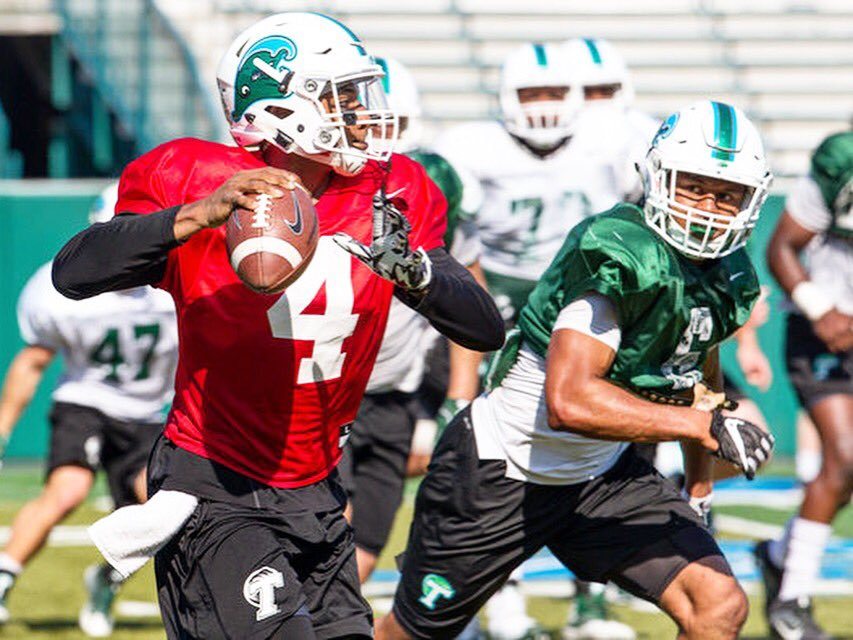
The buzz surrounding Tulane head coach Willie Fritz suggests he’s a turnaround artist.
In his second season at Central Missouri (1997), Fritz rode the Mules to a three-win improvement. In his second season at Sam Houston State (2011), Fritz boosted the Bearkats’ win total from six to 14 and lost narrowly to an emerging North Dakota State dynasty in the NCAA Division I FCS title game.
Now entering his second season at Tulane, Fritz is hoping for a similar turnaround. And there’s reason for hope. The 2017 Green Wave will likely feature 17 returning starters and an intriguing newcomer in quarterback Jonathan Banks, a former four-star recruit who transferred from Independence Community College in Kansas. Add to that a strong stable of running backs along with offensive line fortifications from Hunter Knighton, a graduate transfer from the University of Miami, and Dominique Briggs from Coffeyville Community College (Kan.), and Tulane is poised for progress.
The trouble is, that progress might be hard to measure by wins and losses in 2017.
Coming off a 4-8 record, oddsmakers will be surprised if the Green Wave improves on that win total this season. That’s not a knock on Fritz as much as it’s an indication of Tulane’s tall task of climbing in a tough American Athletic Conference, in which the Green Wave was recently picked to finish last in the West Division. Not only will Tulane tackle the AAC’s top teams in 2017, the Green Wave also faces a nonconference gauntlet that includes powerful Oklahoma, a likely contender for the Big 12 crown.
Even the lone FCS team on Tulane’s ledger will be a test. The Green Wave opens Sept. 2 with Grambling State, which won 11 games and a Southwestern Athletic Conference championship in 2016. GSU features senior quarterback DeVante Kincade, an Ole Miss transfer who was named 2017 SWAC Preseason Offensive Player of the Year after throwing for 3,022 yards and 31 touchdowns in 2016. He’s joined on offense by fellow preseason first-team All-SWAC picks Martez Carter (running back and kick returner), Devohn Lindsey (wide receiver), Trent Scott (offensive line) and William Waddell (offensive line), who form a formidable attack that could challenge Tulane’s retooled defense, a unit that lost Nico Marley and Tanzel Smart to graduation and the NFL.
No. 1 in your program and also on Tulane’s list of likely defensive playmakers in 2017 will be senior end Ade Aruna, a Nigeria native who played his first-ever game of American football in 2011. He’s already racked up a bachelor’s degree in homeland security studies to go with 16 tackles for a loss in 2016, and the La Lumiere School (Ind.) graduate is poised to become an even greater force for the Green Wave this fall. Another defender to watch is senior cornerback Parry Nickerson, a Louisiana native who earned second-team All-AAC honors last season after amassing 29 tackles and four interceptions, including one he returned for a 96-yard touchdown. That type of opportunistic play — Tulane finished 2016 among the nation’s leaders in turnover margin at plus-9 — will need to continue for the Green Wave to rise in 2017.
Most importantly, however, Tulane’s offense must improve. The run-heavy Green Wave rambled for 228.1 rushing yards per game in 2016, which ranked No. 26 nationally, but only Week 4 opponent Army West Point threw for fewer yards (1,360). And while the ground game is likely to remain sturdy in 2017, with running back Dontrell Hilliard (9 touchdowns and 5.6 yards per carry in 2016) poised for a breakout season and support from fellow senior Sherman Badie (1 TD, 3.9 yards per carry in 2016), the aerial attack needs a boost. Those hopes rest largely in a rapidly rebuilt offensive line and Banks, the likely man under center, whose dual-threat abilities should be a nice fit in Doug Ruse’s triple-option attack. Banks’ top returning target is junior Terren Encalade, a Louisiana native who led Tulane in receptions (36), yards (500), yards per catch (13.9) and receiving touchdowns (6) in 2016.
If Encalade, Banks and company can add potency to Tulane’s passing attack in 2017, it’ll go a long way toward helping Fritz continue his trend of dramatic Year 2 improvements.


